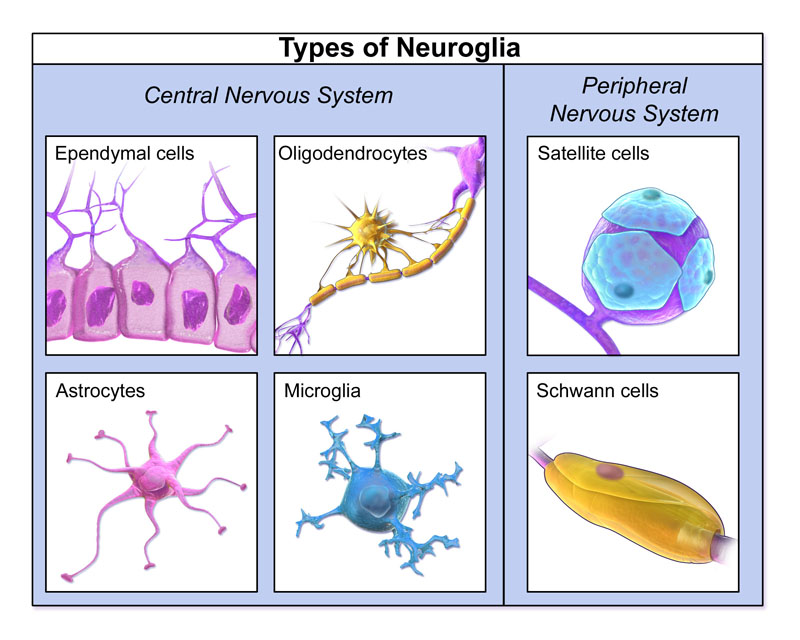Glial Cells
- Glial cells, sometimes called neuroglia, are non-neuronal cells that maintain homeostasis, form myelin, and provide support and protection for neurons in the central nervous system and peripheral nervous system.
- Microglia are specialized macrophages capable of phagocytosis that protect neurons of the central nervous system.
- The most abundant type of macroglial cell in the CNS, astrocytes anchor neurons to their blood supply. They regulate the external chemical environment of neurons by removing excess ions and recycling neurotransmitters released during synaptic transmission.
- Oligodendrocytes are a type of neuroglia that provides support and insulation to axons in the central nervous system by creating the myelin sheath, equivalent to the function performed by Schwann cells in the peripheral nervous system.
- Ependymal cells line the spinal cord and the ventricular system of the brain. These cells are involved in the creation and secretion of cerebrospinal fluid (CSF) and beat their cilia to help circulate the CSF and make up the blood-CSF barrier.
- Similar in function to oligodendrocytes, Schwann cells provide myelination to axons in the peripheral nervous system (PNS). They also have phagocytotic activity and clear cellular debris that allows for regrowth of PNS neurons.
- Satellite glial cells are small cells that surround neurons in sensory, sympathetic, and parasympathetic ganglia which help regulate the external chemical environment.
